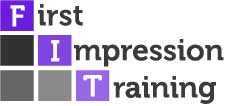So just how do we effectively identify and respond to a vulnerable customer?
The 2024 report by NICE, in association with leading research company, Focaldata, entitled The Changing Face of Vulnerability, considers how businesses need to find ways to overcome the complexities of identifying, and then responding to, vulnerable customers – especially given the ever increasing numbers of consumers who could potentially be deemed ‘vulnerable’ in this post-pandemic period.
According to the FCA, 47% of the adult population in the UK shows one or more characteristics of vulnerability and 60% struggle to keep up with bills. Against the backdrop of economic uncertainty, this figure is sadly rising – and cannot, or should not, be ignored by British companies.
Challenging some of the traditional assumptions about VULNERABILITY would be a good place to start:
1. The idea that older people are vulnerable is a misconception! The survey reported that this was the group least likely to be affected by rising bills and credit commitments – just 14% versus 32% for all other age groups. Over 65’s were also least likely to have changed their behaviour due to financial pressures in the last 12 months.
2. The majority of potentially vulnerable customers don’t even identify themselves as ‘vulnerable’. Only 17% (less than 2 in 10) self-identified as ‘vulnerable’, yet when assessed against FCA criteria, this number dramatically increased to 67% (7 out of 10), indicating that many of those UK consumers surveyed are in potentially vulnerable circumstances, despite not viewing themselves as such.
3. An overwhelming majority of those surveyed cited poor mental health as a cause of vulnerability, yet don’t want to talk about it. 71% agree that poor mental health is a key driver for vulnerability, yet over a third of those surveyed, said they would not be comfortable talking about it with a Customer Service Advisor. More worryingly, this figure rises to almost half (47%) for those who were actually experiencing mental health issues during the time of the survey.
4. The NICE report quotes that “vulnerability is nuanced and complex” and while 20% of UK adults reported experiencing poor mental health in the last 12 months, the underlying drivers of vulnerability go way beyond this issue – they are often subtle, surprising and difficult to detect. Financial pressures, lifestyle changes, relationship breakdowns and family issues can cause ANYONE to become vulnerable, however there IS something companies can do to help….
YOUR organisation could be that lighthouse for customers navigating the stormy seas of vulnerability – with a sprinkle of understanding and a dash of proactive kindness, YOU could make a world of difference to those struggling to face up to the signs of vulnerability in their own lives.
Let’s take a look at some real-life examples, to help you identify and support those in need and walk through some practical, hands-on strategies to help YOU help YOUR customers in these challenging times.
Spotting the Faces of Vulnerability
Diving into vulnerability, we’ve uncovered that it wears many masks, affecting nearly half of adults in various, often surprising, ways. Let’s meet the people behind the statistics and explore how YOU can extend a helping hand to those you may not have previously considered ‘vulnerable’….
1. Unexpected Carers: Imagine Sam, who’s recently become the primary caregiver for a family member. Like many in his shoes, Sam might not outwardly show the stress and financial strain he’s under. Strategy: Offer flexible service options or payment plans. A simple “How can we make things easier for you?” can open doors to understanding Sam’s needs.
2. Ground-down Generation Zers: Meet Zoe, juggling part-time jobs and grappling with mental health challenges. Strategy: Create a youth-friendly environment in your business, offering discounts or services tailored to younger customers. Engage through social media to offer support and resources that resonate with their lifestyle.
3. Striving Renters: Jordan and Taylor, struggling to balance rent with other expenses, represent this group. Strategy: Implement a loyalty programme or offer a small discount for consistent payments. Communicate openly about financial assistance options or refer to community resources that can offer help.
4. Hard-up Homemakers: Chris, a single parent, is doing his best to manage household expenses. Strategy: Provide value-added services or products that help homemakers stretch their budget further. Consider a ‘pay what you can’ day for essential services or products, showing empathy and support for their situation.
5. Solo Sufferers: Sam, navigating life after a significant change, might feel the financial pinch more acutely. Strategy: Personalised services can make a big difference. Offer a check-in service or a personal shopper experience that can make them feel cared for and understood.
Practical Steps to Make a Difference
Training Staff: Equip your team with the skills to recognise signs of stress or hardship in customer interactions. Encourage them to offer support and direct customers to resources or services that can help.
Creating Safe Spaces: Ensure your business environment, both physical and online, is welcoming and inclusive. Sometimes, just knowing there’s a place where those feeling vulnerable won’t be judged, can make all the difference to someone struggling.
Feedback Loops: Encourage feedback from your customers about how you can serve them better. This can provide invaluable insights into the challenges they face and how you can adapt your services to meet their needs.
Community Engagement: Collaborate with local organisations and charities that support vulnerable groups. Not only can you offer direct assistance, but you can also raise awareness and encourage others to contribute.
Remember, it’s not about grand gestures but the consistent, small acts of kindness and understanding that build a supportive community around your business.
Ready to Make a Difference?
Curious about more ways YOU can support YOUR customers, especially the Sams, Zoes, Jordans, Taylors, and Chris’s of the world? Let’s dive deeper into how your business can be a beacon of support and understanding – and in a much easier way than you might think!
If YOU want to find out how YOU can effectively manage your relationships with YOUR vulnerable customers, then book your 30 min virtual discovery call with us here: https://calendly.com/firstimpressiontraining and let’s explore together how WE can support YOU to support YOUR people, so they can better support YOUR customers.


















